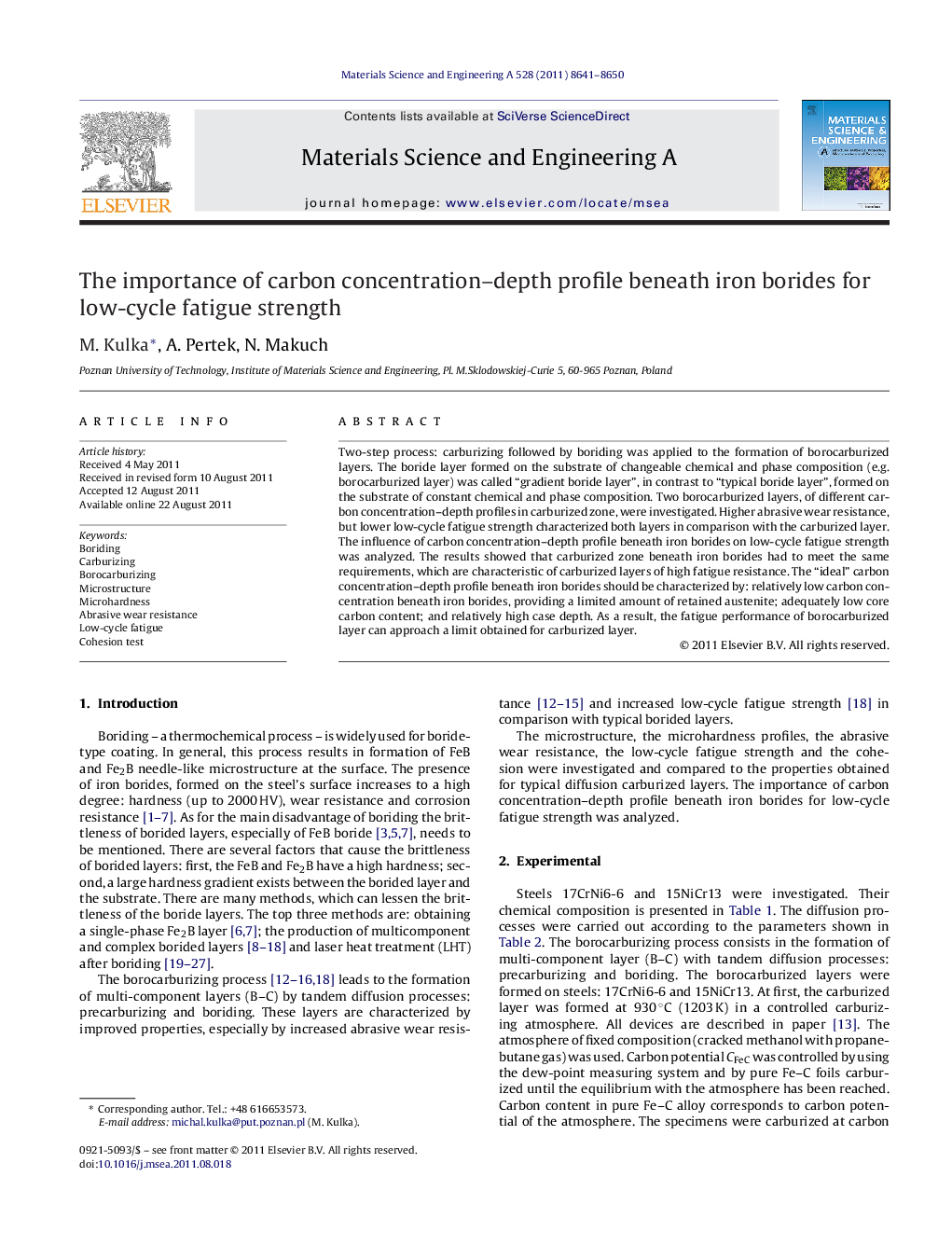| Article ID | Journal | Published Year | Pages | File Type |
|---|---|---|---|---|
| 1578094 | Materials Science and Engineering: A | 2011 | 10 Pages |
Two-step process: carburizing followed by boriding was applied to the formation of borocarburized layers. The boride layer formed on the substrate of changeable chemical and phase composition (e.g. borocarburized layer) was called “gradient boride layer”, in contrast to “typical boride layer”, formed on the substrate of constant chemical and phase composition. Two borocarburized layers, of different carbon concentration–depth profiles in carburized zone, were investigated. Higher abrasive wear resistance, but lower low-cycle fatigue strength characterized both layers in comparison with the carburized layer. The influence of carbon concentration–depth profile beneath iron borides on low-cycle fatigue strength was analyzed. The results showed that carburized zone beneath iron borides had to meet the same requirements, which are characteristic of carburized layers of high fatigue resistance. The “ideal” carbon concentration–depth profile beneath iron borides should be characterized by: relatively low carbon concentration beneath iron borides, providing a limited amount of retained austenite; adequately low core carbon content; and relatively high case depth. As a result, the fatigue performance of borocarburized layer can approach a limit obtained for carburized layer.
► Two-step process: carburizing followed by boriding was proposed. ► Carbon concentration–depth profile beneath iron borides have been analyzed for low-cycle fatigue strength. ► Lower carbon content beneath iron borides reduces the amount of alloyed cementite and retained austenite. ► Therefore, lower carbon content beneath borides advantageously influences fatigue strength.
